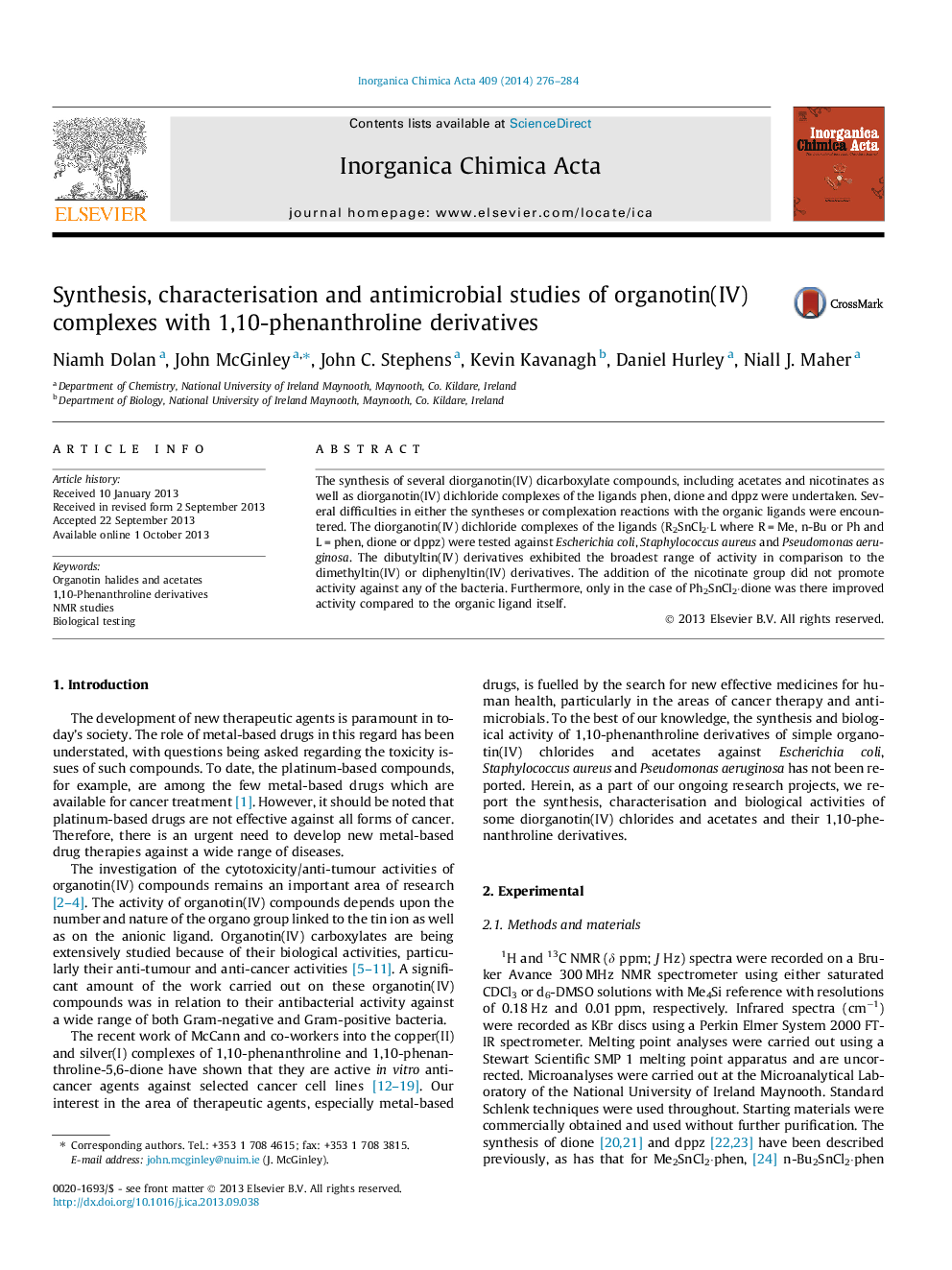| کد مقاله | کد نشریه | سال انتشار | مقاله انگلیسی | نسخه تمام متن |
|---|---|---|---|---|
| 1305783 | 975049 | 2014 | 9 صفحه PDF | دانلود رایگان |

• Synthesis of diorganotin(IV) dicarboxylate and diorganotin(IV) dichloride complexes of the ligands phen, dione and dppz.
• Diorganotin(IV) dichloride complexes tested against E. coli, S. aureus and P. aeruginosa.
• Dibutyltin(IV) derivatives exhibited broadest range of activity.
• Improved activity for Ph2SnCl2·dione compared to the organic ligand itself.
The synthesis of several diorganotin(IV) dicarboxylate compounds, including acetates and nicotinates as well as diorganotin(IV) dichloride complexes of the ligands phen, dione and dppz were undertaken. Several difficulties in either the syntheses or complexation reactions with the organic ligands were encountered. The diorganotin(IV) dichloride complexes of the ligands (R2SnCl2·L where R = Me, n-Bu or Ph and L = phen, dione or dppz) were tested against Escherichia coli, Staphylococcus aureus and Pseudomonas aeruginosa. The dibutyltin(IV) derivatives exhibited the broadest range of activity in comparison to the dimethyltin(IV) or diphenyltin(IV) derivatives. The addition of the nicotinate group did not promote activity against any of the bacteria. Furthermore, only in the case of Ph2SnCl2·dione was there improved activity compared to the organic ligand itself.
The synthesis of several diorganotin(IV) dicarboxylate compounds, including acetates, picolinates and nicotinates as well as diorganotin(IV) dichloride complexes of the ligands phen, dione and dppz were undertaken and the complexes were tested against Escherichia coli, Staphylococcus aureus and Pseudomonas aeruginosa. The dibutyltin(IV) derivatives exhibited the broadest range of activity in comparison to the dimethyltin(IV) or diphenyltin(IV) derivatives. Only in the case of Ph2SnCl2·dione was there improved activity compared to the organic ligand itself.Figure optionsDownload as PowerPoint slide
Journal: Inorganica Chimica Acta - Volume 409, Part B, 1 January 2014, Pages 276–284